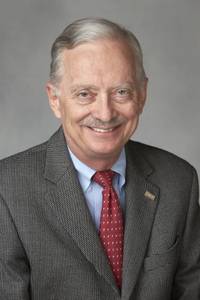Next year will not be a boom year for the Las Vegas economy, but it will be far from a bust.
That was the consensus at the 2017 Economic Outlook hosted by UNLV’s Center for Business and Economic Research (CBER) Tuesday at the M Resort.
Stephen Miller, director of the CBER at the Lee Business School and an economics professor at UNLV, delivered the center’s forecast for the next two years.
“It looks like in 2017, in 2018, the improvement is attenuated,” Miller said. “We’re slowing down a bit. We’re improving but not as much as in previous years.”
CBER’s Southern Nevada Economic Outlook projects modest growth in employment (2.6 percent average), personal income (3.9 percent), visitor volume (1.25 percent) and housing prices (1.6 percent) over the next two years. It also shows confidence in population growth for the region, with increases above 2 percent in both 2017 and 2018.
Despite the slowing of expansion in these key areas and admittedly conservative projections, Miller remains optimistic that Southern Nevada and the state overall are moving in a positive direction.
“There’s no signal of recession,” Miller said.
The local housing market remains tight with just a three-month supply of single-family homes for sale and relatively little new construction coming online to relieve it. But the report highlighted the health of the market compared to the worst of the recession years. In the first quarter of 2010, 70 percent of mortgages in Nevada had negative equity and more than half still did by the end of 2012. Nevada still leads the nation in percentage of mortgages that are underwater, but the figure now stands at just more than 15 percent.
“We’re back in a situation where we should see people retiring in Southern California and selling their house, and moving to Phoenix or Las Vegas,” Miller said.
Miller cautioned that the national economic mood could change drastically as a result of the uncertainty surrounding the incoming presidential administration, even when considering the Dow Jones is pushing 20,000 and the Federal Reserve’s anticipated interest rate hikes. The CBER forecast projects multiple interest rate hikes in 2017 and 2018 following almost eight years of holding near zero.
“There are a lot of question marks out there,” Miller said. “I hope we all give the (incoming) administration the benefit of the doubt.”

